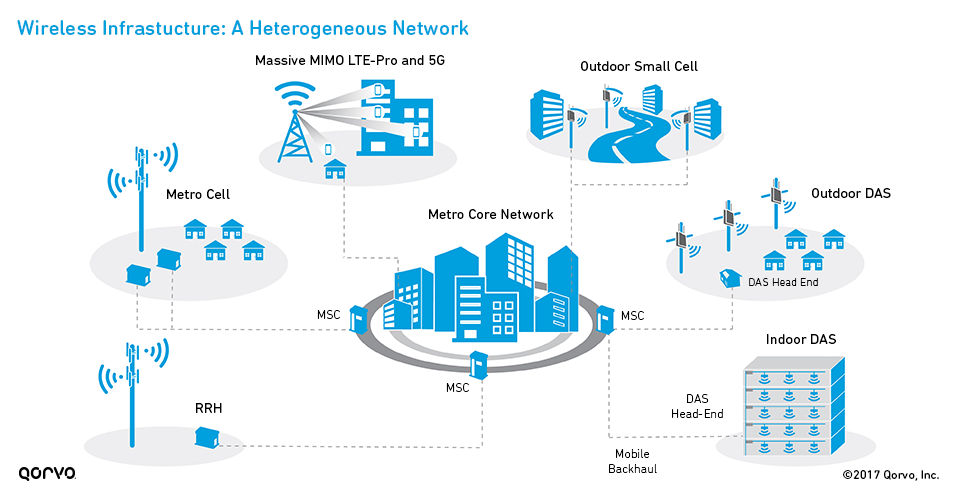

5G mobile networks — the next-generation standard for wireless communications — are set to start taking over the mobile network environment in 2019, although they won’t fully replace LTE or its variants immediately. 5G delivers vastly increased capacity, lower latency, and faster speeds.
5G networks will operate in a high-frequency band of the wireless spectrum, between 28 GHz and 60 GHz. This range is known as the millimeter wave (mmWave) spectrum. The sub-6 GHz range that LTE calls home will also be used. 5G is expected to add unlicensed frequencies such as the 3.5 GHz to its list of new frequencies for mobile use. This means a lot of bandwidth will be available to users.
In addition to greater bandwidth, the new 5G networks will have a dense, distributed network of base stations in the small cell infrastructure. This will allow more processing to happen on the edge, leading to lower latencies.


The high frequencies of 5G networks come with a wrinkle: rather than the huge, geographically dispersed cell towers that characterize LTE networks and its predecessors, many of the 5G networks will be composed of small cells. Consumers should expect to see 5G antennas placed throughout their cities, blending in with the local environment. Antennas will even have a place in homes (for example, Qualcomm’s antenna module for their X55 5G modem).
Small cells are key to the functionality of 5G networks because they provide the increased data capacity that 5G demands. They help providers reduce costs by eliminating expensive rooftop systems and installation costs. Users can expect improved performance and battery life of mobile handsets since less power is required to transmit data to something nearby.
Small cells will also be important to the workability of 5G in the millimeter wave spectrum. At these mmWave frequencies, signals have trouble getting through walls.
It will be important that 5G networks support the coexistence of multiple standards (LTE, WiFi) and coordinate with various site types (macro, micro, and pico base stations). A premier challenge of 5G network design has been to create a network architecture capable of supporting this kind of flexibility while meeting the multifaceted access demands of an Internet of Things (IoT) future.
The new 5G networks will also need to incorporate seamless coexistence of LTE and 5G standards. This is mostly embodied in the spectrum sharing of frequencies used by both standards.
Networking and hardware vendors are still trial-testing their technologies. For example, as of early 2019, Verizon is conducting friendly user tests in the U.S., while AT&T is testing its own network with mobile hotspots in 12 cities. Both were introduced in 2018. Verizon also plans to build a fiber and wireless infrastructure to efficiently deliver mobile video.

PCB laminate uses high quality
FR-4 material for PCB production!

3-5days' Delivery
99% on-time shipping

Paypal online guarantees the instant,
convenient, and secure payment!

Track Fabrication Process On Line
Professional Technical Assistance

Pcbspeed fully compliant with the
ISO 9001: quality management
system and UL certificate.
Our philosophy:Rapidness,accuracy and excellence have always been our philosophy.PCBspeed is the most excellent small-scale PCB prototype manufacturer.









Telephone
+86-400-618-9990